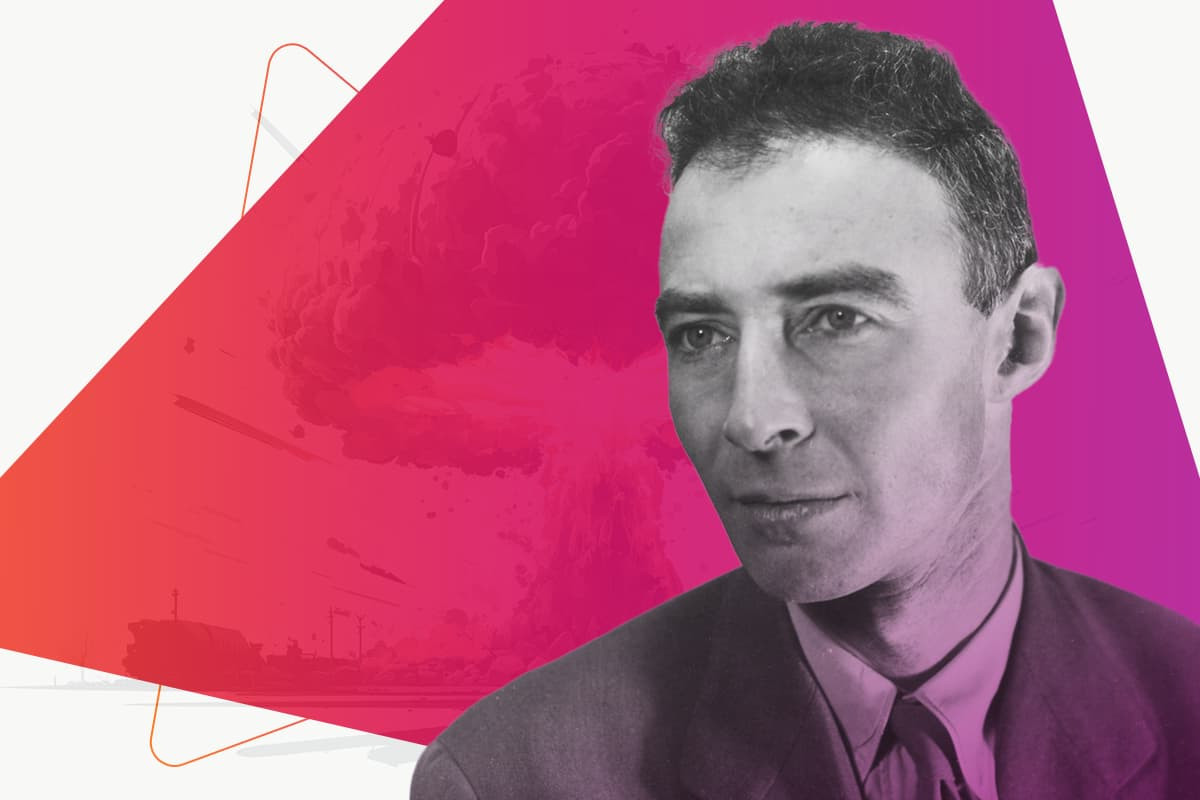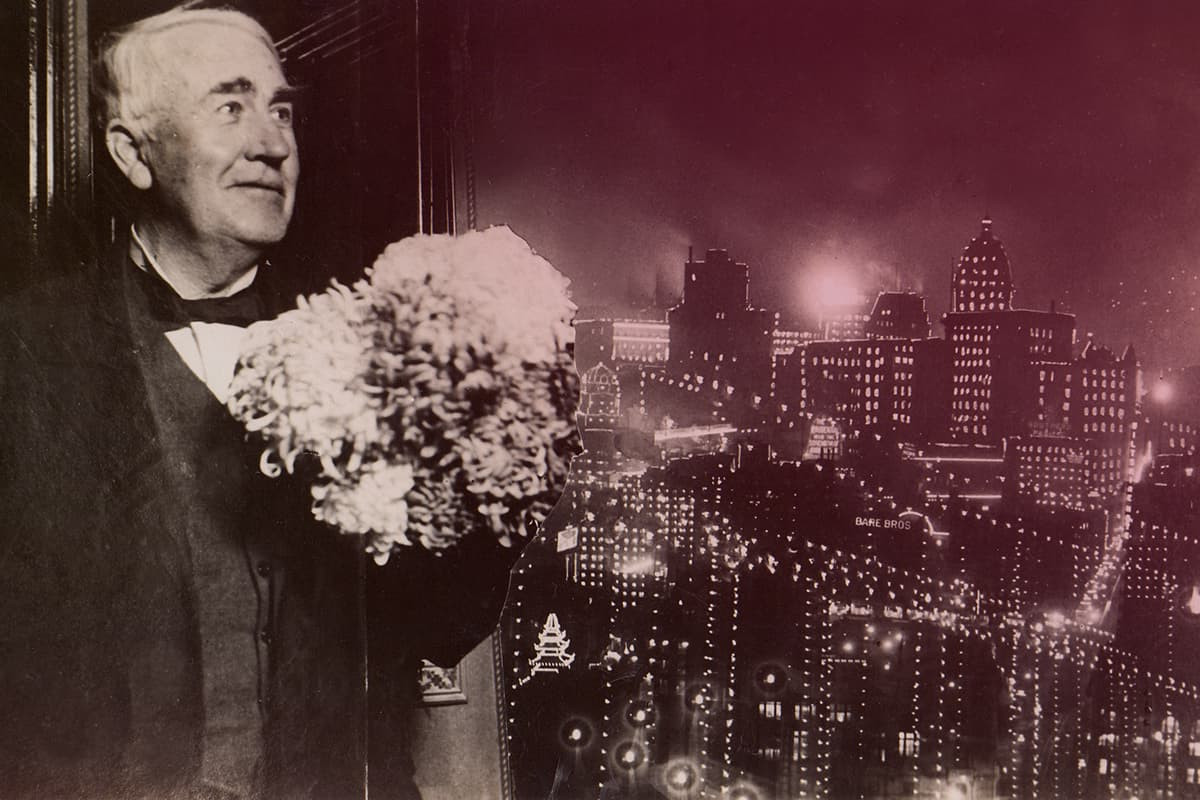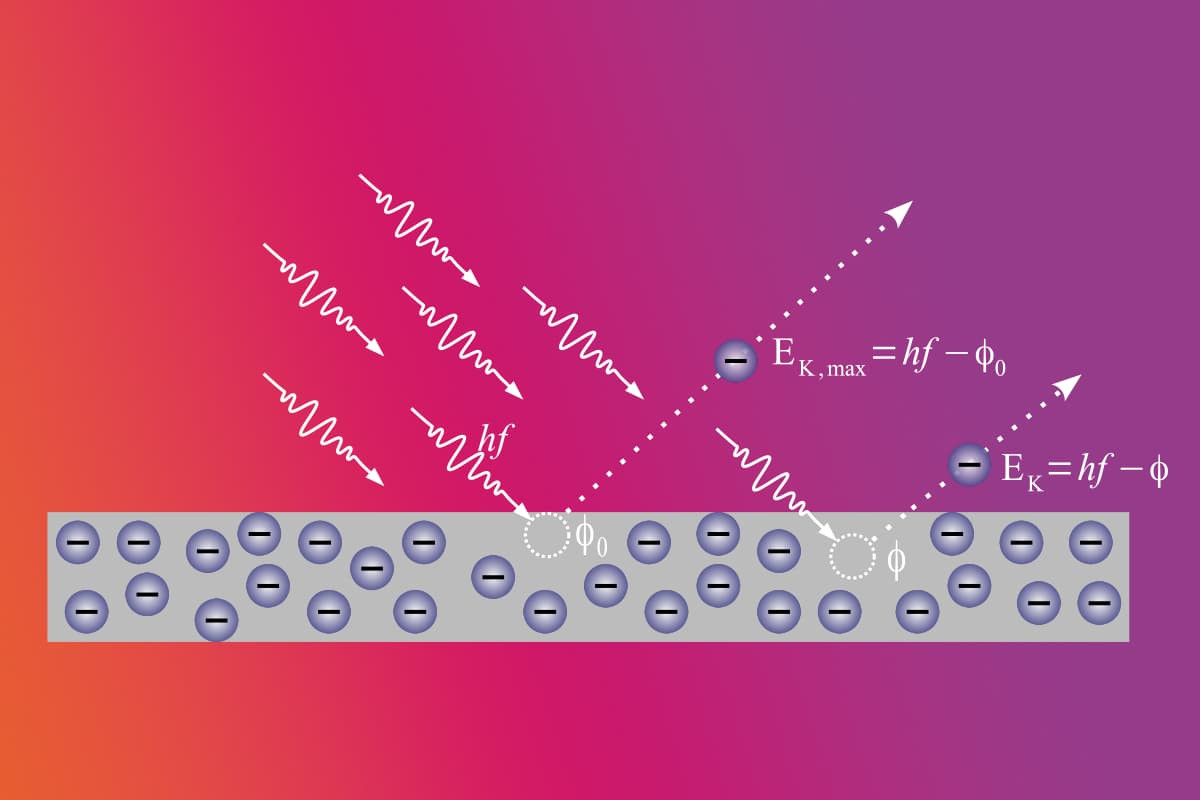
What is in this article?
Oppenheimer, about whom much has been said recently and whose story has been made into a film, changed the course of history with his mission during World War II. The work of the famous physicist, also known as the father of the atomic bomb, set the stage for the atomic age for the world in the second half of the 1940s.
If you’re intrigued by the persona and scientific impact of Robert Oppenheimer, the illustrious physicist who played a transformative role in shaping global history, our newly published blog provides comprehensive insights into his noteworthy contributions to the realm of science.
Who is Robert Oppenheimer?
Julius Robert Oppenheimer, known as the “Father of the Atomic Bomb” was born in New York on April 22, 1904. The son of Julius S. Oppenheimer, a wealthy German textile merchant, and the artist Ella Friedman, the physicist grew up in a Manhattan apartment decorated with paintings by Van Gogh and Gauguin. He was born the first child of Julius, who was in the textile import business, and Ella, a painter whose family had lived in New York for generations.
Oppenheimer enrolled at the Ethical Culture School of New York in 1911. Oppenheimer’s academic abilities became apparent at a very early age, and his talents in physics and chemistry were recognized by the age of 10. During this time he began a correspondence with the Mineralogical Club in New York, the oldest mining club in the United States. After a while, the Mineralogical Club invited him to give a lecture at the age of 12.
In 1922, he began to study at Harvard University. Although he specialized in chemistry, he realized that his true passion was physics. In 1925, he started to work in physics at the Cavendish Laboratory in Cambridge. In 1906, he was lectured by J.J. Thomson, who was awarded the Nobel Prize in Physics for his discovery of the electron. Although he had been working on experimental physics until then, Oppenheimer realized in Cavendish that his area of interest was theoretical physics and so accepted the invitation of Max Born, director of the Institute for Theoretical Physics at the University of Göttingen, to work with him on projects in Germany.
Just before the 1920s, quantum mechanics had been popularized by a paper published by the German scientist Max Planck. In this paper, Planck proposed that all light has subjective photons. According to Planck’s view, energy existed as distinct units known as quanta. Max Planck was awarded the Nobel Prize in Physics for his contributions in this field. Following Planck, Einstein proposed quantifying both radiation and energy in the same way. Louis de Broglie and Werner Heisenberg were also actively engaged in this field of study.
While European physicists were working on developing the theory of quantum mechanics at this time, Oppenheimer, who had the opportunity to be in Europe during this important period of physics, earned his PhD in 1927. While in Germany, he published numerous papers that contributed to quantum theory.
In particular, the Born-Oppenheimer approach made an important contribution to quantum molecular theory. The Born-Oppenheimer approach involved the assumption that all movements of the atomic nucleus and the electrons composing the molecule should be treated separately.

While pursuing his studies, he held professorial positions at both the University of California, Berkeley, and the California Institute of Technology. At Berkeley, he became friends with Ernest Lawrence, one of the world’s best experimental physicists and the inventor of the cyclotron (a device for accelerating subatomic particles). As a result of this friendship, Lawrence named his son Robert.
Oppenheimer and his student Hartland Snyder published a paper on the existence of black holes in 1939. This work, along with the Born-Oppenheimer approach, remains one of his most cited papers to this day.
What is the Manhattan Project?

In 1942, General Leslie Groves extended an invitation to Oppenheimer to assume the role of scientific director for the covert Manhattan Project, aimed at the development of the atomic bomb. After Oppenheimer selected a site in the Los Alamos region of New Mexico for the project, the U.S. military established a series of laboratories there.
Presently, this laboratory is engaged in a multitude of domains, encompassing space exploration, renewable energy, medicine, nanotechnology, and nuclear fusion. The lab, which has more than 10,000 employees, is now managed by Triad National Security, which is part of the U.S. government and conducts research on behalf of national security.
Leading physicists from both America and Europe were gathered at Los Alamos, where a scientific panel under the leadership of Oppenheimer was established. This panel was given the task of developing a bomb the likes of which the world had never seen before. Oppenheimer was both director of the Los Alamos laboratory and responsible for the invention and construction of this bomb. Three years after the project began, Oppenheimer and his team tested the atomic bomb.
The test, conducted by Oppenheimer and his team under the code name Trinity, was the world’s first test for the use of nuclear energy. During this test, the inaugural atomic explosion took place on July 16, 1945, approximately 210 miles to the south of Los Alamos, New Mexico. This event transpired in an expanse within the Alamogordo Bombing Range called the Jornada del Muerto.
During the Trinity test, the plutonium explosive device, codenamed Gadget, detonated above the New Mexico desert at 05:30 in the morning. This release of energy resulted in a nuclear force equivalent to 18.6 kilotons. This energy immediately destroyed the tower and turned the surrounding asphalt and sand green. The released energy caused radiation exposure over an area of about 2,700 miles. The success of the Trinity test showed that an atomic bomb could be used by the US military. This test marked the beginning of the atomic age.

Robert Oppenheimer’s Works and Awards Received
Oppenheimer made substantial contributions to quantum field theory, delving into realms of theoretical astronomy, nuclear physics, spectroscopy, and quantum electrodynamics. His work extended to areas like general relativity and nuclear energy, the latter being a form of energy classified as a non-renewable resource. In his studies he made many discoveries, including the neutron meson and the neutron star.
He made important contributions to the theory of cosmic ray showers and worked on quantum tunnel definitions. Together with his student Melba Phillips, he worked on calculations of radioactivity and developed the theory known as the Oppenheimer-Phillips process.
Additionally, Oppenheimer conducted extensive research on subjects ranging from the Dirac equation to black holes. In 1953, the U.S. Atomic Energy Commission awarded Robert Oppenheimer the Enrico Fermi Prize.

The Friendship Between Robert Oppenheimer and Albert Einstein
The paths of Robert Oppenheimer and Albert Einstein first crossed in the early 1930s at the California Institute of Technology (Caltech), where Oppenheimer taught and Einstein was a visiting professor.
Unlike Oppenheimer, Einstein was skeptical about quantum physics. With his general theory of relativity, Einstein held that the speed of light and electromagnetic radiation was the same regardless of the angle of measurement.
In 1947, when they worked together at the Institute for Advanced Study, the professional acquaintance between Oppenheimer and Einstein turned into a friendship despite their opposing views.

Oppenheimer’s Place in Popular Culture
The Manhattan Project, led by Oppenheimer, has been frequently featured in films and many other works of popular culture since 1945 because of its history-changing impact. Some of these were:
- The Beginning or the End: The 1947 film begins with Einstein’s letter, continues with developments at Los Alamos and ends with the dropping of the atomic bomb on Nagasaki and Hiroshima.
- Los Alamos: “Los Alamos” is a historical novel authored by Joseph Kanon, which was published in 1997. This work falls within the crime and spy novel genres, drawing inspiration from the Manhattan Project as its backdrop.
- Manhattan: The Series, which tells the fictional version of the Manhattan Project, was also inspired by the lives of the project’s scientists. Despite positive reviews, it was cancelled in 2016 after 2 seasons.
Oppenheimer was a scientist who alone attracted the attention of popular culture. The series Oppenheimer, fictionalized in 1980 with scenes from his life, stands as one of the pioneering works in this regard.
The famous composer John Adams also thematized Oppenheimer in his opera Doctor Atomic in 2005.
In 2023, the film Oppenheimer was released, starring Cillian Murphy as Oppenheimer. It broke audience records worldwide from the very first day it hit theaters. Directed by Christopher Nolan, the film recounts the life of Robert Oppenheimer and his role in the invention of the atomic bomb.
The Little-Known Facts About Robert Oppenheimer
There are some intriguing lesser-known facts about Oppenheimer, who played a pivotal role in reshaping history and unveiling numerous discoveries through his scientific research:
- He became interested in Sanskrit, the language of the Hindu scriptures. He studied Sanskrit while teaching at Berkeley.
- Throughout his life he had a special interest in poetry. One of his poems was published in the Harvard literary journal Hound & Horn.
- Although he was nominated three times for the Nobel Prize in Physics, he was not awarded it.
Feel free to share your views about Robert Oppenheimer in the comments and pass this article on to anyone interested in the life of the famous physicist.

 Online Services
Online Services Application Inquiry
Application Inquiry Pay Assurance Fee
Pay Assurance Fee Query Installation Number
Query Installation Number Compensation Fee Inquiry
Compensation Fee Inquiry Automatic Payment Order Inquiry
Automatic Payment Order Inquiry Partnership
Partnership







Leave a Comment